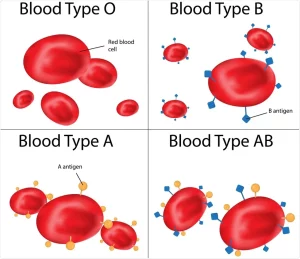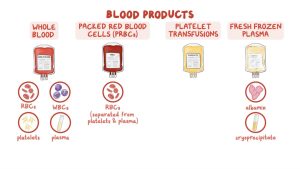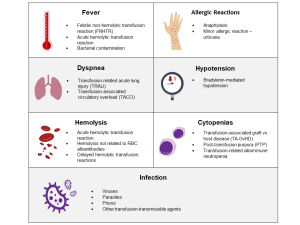- 24 January 2024
- 243
Blood Transfusion: What to Know If You Get One

Introduction
The world of blood transfusions is both fascinating and vital, playing a crucial role in medical interventions. This comprehensive guide aims to provide an in-depth exploration of various facets related to blood transfusions, from understanding the process to examining the reasons individuals might require this life-saving procedure.
What Happens During a Blood Transfusion?
Components of Blood
Blood is a complex mixture comprising red and white cells, plasma, and platelets. The term “whole blood” refers to blood that contains all these components. This section sheds light on the composition of blood, setting the stage for comprehending the transfusion process.
Transfusion Duration
Depending on the volume needed, a blood transfusion can last anywhere from 1 to 4 hours. Notably, around 5 million Americans undergo a blood transfusion annually, attesting to its commonality and safety.

Why Would You Need a Blood Transfusion?
Various scenarios necessitate a blood transfusion, including:
- Major surgery or serious injury resulting in blood loss.
- Bleeding in the digestive tract due to conditions like ulcers.
- Illnesses such as leukemia or kidney disease causing anemia.
- Cancer treatments like radiation or chemotherapy.
- Blood disorders or severe liver problems.
Blood Types
Understanding the significance of blood types becomes paramount during a transfusion. The compatibility of the blood given with the recipient’s blood type (A, B, AB, or O) is crucial to avoid complications. This section explores the concept of universal donors and recipients, highlighting the roles of type O and AB blood.

Types of Blood Transfusions
Red Blood Cell Transfusion
This type addresses conditions like anemia or iron deficiency.
Platelet Transfusion
Used to tackle bleeding issues, often associated with cancer or cancer treatments.
Plasma Transfusion
Essential for replacing proteins aiding blood clotting, particularly after severe bleeding or in the presence of liver disease.

During the Transfusion
Recipients typically receive a blood transfusion in a medical setting, monitored for any potential complications. The infusion occurs through a needle and an IV line, ensuring a controlled and supervised process.
Risks and Complications
While blood transfusions are generally considered safe, there are associated risks. This section elaborates on potential complications:
Fever
Immediate or delayed fever post-transfusion, with guidance on when to seek medical attention.
Allergic Reactions
Possibility of itching and hives even with the correct blood type, occurring during or shortly after the transfusion.
Hemolytic Reactions
Differentiating between acute and delayed reactions, understanding symptoms like fever, chills, nausea, or pain.
Anaphylactic Reaction
Identifying life-threatening symptoms like swelling, shortness of breath, and low blood pressure.

TRALI (Transfusion-Related Acute Lung Injury)
A rare but serious lung-related reaction, showcasing symptoms of fever and low blood pressure.
Bloodborne Infections
Detailed examination of infection risks, including HIV, Hepatitis B and C, West Nile virus, and Zika virus.
Hemochromatosis
Addressing concerns of iron overload, a potential consequence of multiple blood transfusions.
Graft-versus-Host Disease
Exploring the rare but fatal complication where the immune system attacks the recipient’s bone marrow.
Comparative Table: Bloodborne Infection Risks
| Infection | Risk (Approx.) |
|---|---|
| HIV | 1 in 2 million |
| Hepatitis B | 1 in 300,000 |
| Hepatitis C | 1 in 1.5 million |
| West Nile Virus | 1 in 350,000 |
| Zika Virus | Rare, screened since 2016 |
Conclusion
Empowered with this comprehensive knowledge, individuals can make informed decisions and navigate the complexities surrounding blood transfusions. Always consult healthcare professionals for personalized guidance tailored to specific situations.

